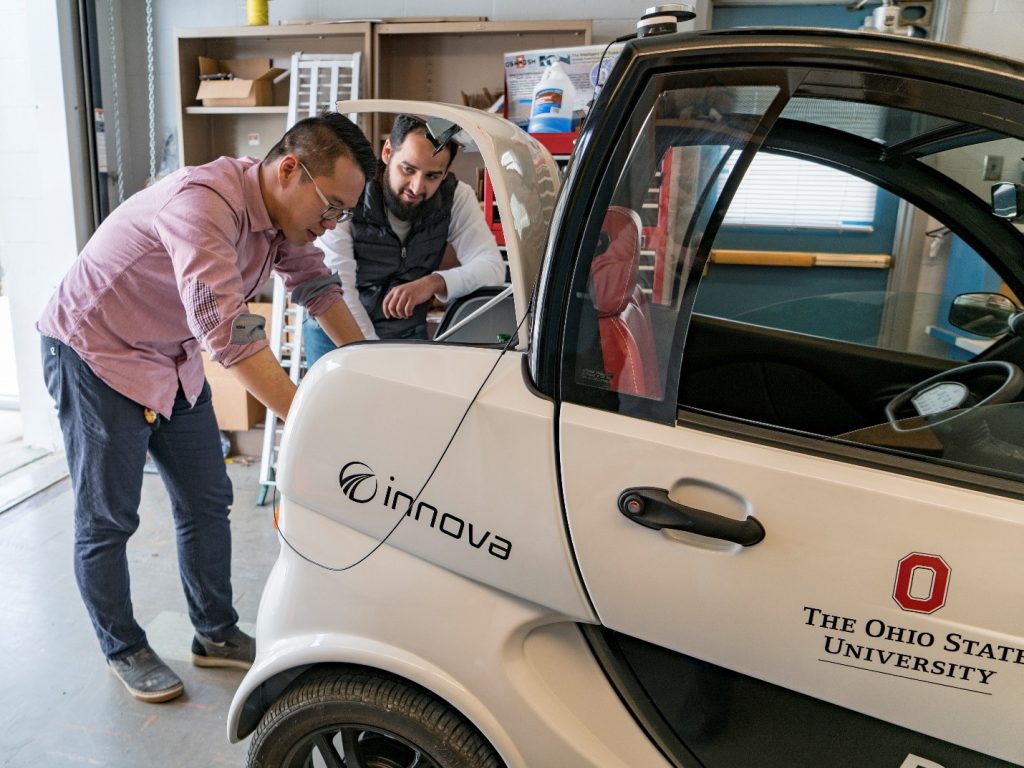New technology growth just seems to come naturally to Ohio. Case in point: Honda’s announcement of its $3.5 billion battery factory just outside the Columbus Region, will create close to 2,200 new jobs
Or you could reference Forsee Power’s recent investment, which will drive technical innovation in electric vehicles (EV) with an expected 3 GWh production capacity by 2027. Add to that a proliferation of semiconductor fabrication and hydrogen technology companies like Hyperion Motors, the Region has become a powerhouse of opportunity for new energy vehicles (NEV) in North America.
A large source of talent for the tech and transportation sector in Columbus comes from the Ohio State University’s College of Engineering and the Center for Automotive Research (CAR). Since 1991, CAR has emphasized three pillars including education, research & training for real-world challenges and economic development in the automotive industry.
The R&D center currently consists of seven vehicle project teams as well as 60+ faculty and 100+ undergraduate and graduate students. The ten on-site labs include an engine and chassis dynamometer facility and a control dynamic laboratory. Each of CAR’s facilities provides space to explore five core research areas: smart mobility, electrification, vehicle connectivity, safety and propulsion. Engineers from internationally known companies have received education from CAR, and the center has hosted companies like Honda, Toyota and Caterpillar for student recruitment events.
Expediting Low Emissions for SuperTruck
While society has been slow to adopt NEV on a grand scale, several technologies have been gaining traction among researchers in recent years. Researchers at CAR are now studying one such innovation in electric vehicles—hydrogen fuel. It has shown strong potential to exponentially reduce emissions by creating the possibility of low-carbon medium-and large-scale trucks.
“Thirty years ago, many thought we were crazy to build a clean energy smart car innovation center,” says Senior Associate Director David Cooke. “The Center for Automotive Research kept at it, though, and 31 years later we are now spending more time in late-stage development and how to rapidly move the technology forward into commercialization.”
As part of the Department of Energy’s SuperTruck 3 initiative, Ohio State University’s CAR will be the primary research institution in partnership with PACCAR to develop 18 Class-8 battery electric and fuel cell vehicles and an accompanying megawatt charger. CAR will utilize AI and computer-based modeling to analyze truck and fleet data.
Moving Hearts, Minds and Electric Vehicles
CAR is also home to the Federal Transit Authority’s Low or No Emissions Commercial Vehicle Testing and Research Center, which conducts on-site safety, performance and fuel economy testing with component testing facilities for energy storage, electric motors and hydrogen fuel cells. The laboratory also has a proving ground located in East Liberty, Ohio where researchers conduct full passenger vehicle research and certification testing including a bus durability course, multiple repair and maintenance bays and a noise test area.
CAR’s experience with researching renewable energy solutions for large vehicles stretches back years with the Central Ohio Transit Authority (COTA). COTA introduced its first two electric transit vehicles to Columbus roads in 2021 after conducting extensive testing to evaluate reliability and sustainability.
The Future of EV is Now
Beyond hydrogen power, CAR is making breakthroughs and innovations in EV batteries as well. In 2021 the Ohio State University was the recipient of $5 million in funding from the United States Department of Energy’s Advanced Research Projects Agency-Energy (ARPA-E). Through ARPA-E’s NEXT-Generation Energy Technologies for Connected and Automated On-Road Vehicles (NEXTCAR) project, CAR focuses on electric car optimizations with the goal of improving the energy efficiency of semi-autonomous, plug-in hybrid electric vehicles by 30%.
This is not CAR’s first attempt at vehicle optimizations. In an earlier NEXTCAR project, the research center demonstrated a multi-horizon vehicle dynamics and powertrain control optimization algorithm which improved light-weight vehicle fuel economy by 10%. In 2022 CAR participated in ARPA-E’s Energy Innovation Summit where Dr. Giorgio Rizzoni, director of the Center for Automotive Research, presented findings of the NEXTCAR program to government officials and the automotive and EV industry.
As a hub for battery companies in Ohio and electric expertise, Columbus is supporting auto/battery manufacturers and suppliers with talent and customized research. Contact us today to learn more about the available resources in the Region.


